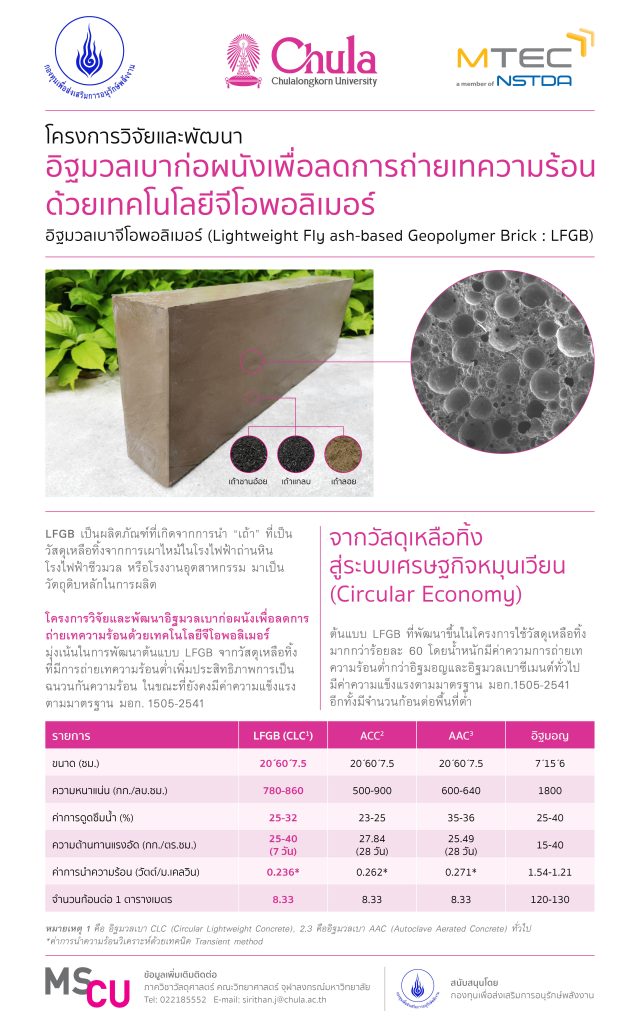
It can also be brought Industrial waste materials It can be used as a starting material for the production of geopolymers, an interesting alternative material.
Geopolymer is a material produced by the reaction between a high concentration alkaline solution and a precursor composed primarily of alumina and silica. The precursor can be obtained from nature such as kaolin clay or as leftover materials. Waste from industry such as fly ash and biomass ash from power plants, etc. The structure of geopolymers resulting from the polymerization reaction is strong. Can form at temperatures below 90°C, is stable, and is environmentally friendly. In the geopolymer production process, carbon dioxide is released and less energy is consumed than Portland cement. In addition, geopolymer has better properties than Portland cement in many respects, such as adsorption properties. Good immobilization and storage of heavy metals Has properties as a heat insulating material. Stable at high temperatures or highly fire resistant and has high strength that can be used as a construction material.
In addition to improving the strength disadvantages of lightweight bricks under the strength values of geopolymer lightweight bricks according to TIS 1505-2541 standards, this research also focuses on improving the heat transfer of Lightweight bricks are better than general lightweight bricks. By considering the heat transfer coefficient or the total heat transfer value of the outside walls of the building (Overall Thermal Transfer Value, OTTV) as an option for new building groups that want to develop into buildings that use net zero energy (Net Zero Building)
The prototype Lightweight Fly ash-based Geopolymer Brick (LFGB) produced has a strength value of 7 days, equivalent to lightweight bricks on the market at 28 days, and has a conductivity value of hot 13% lower than lightweight bricks.
This project received research budget support from Energy Conservation Promotion Fund Ministry of Energy. It is a joint research between Chulalongkorn University and the National Metal and Materials Technology Center.
This project was led by Associate Professor Dr. Sirithan Jiemsirilers from the Department of Materials Science, Faculty of Science.

